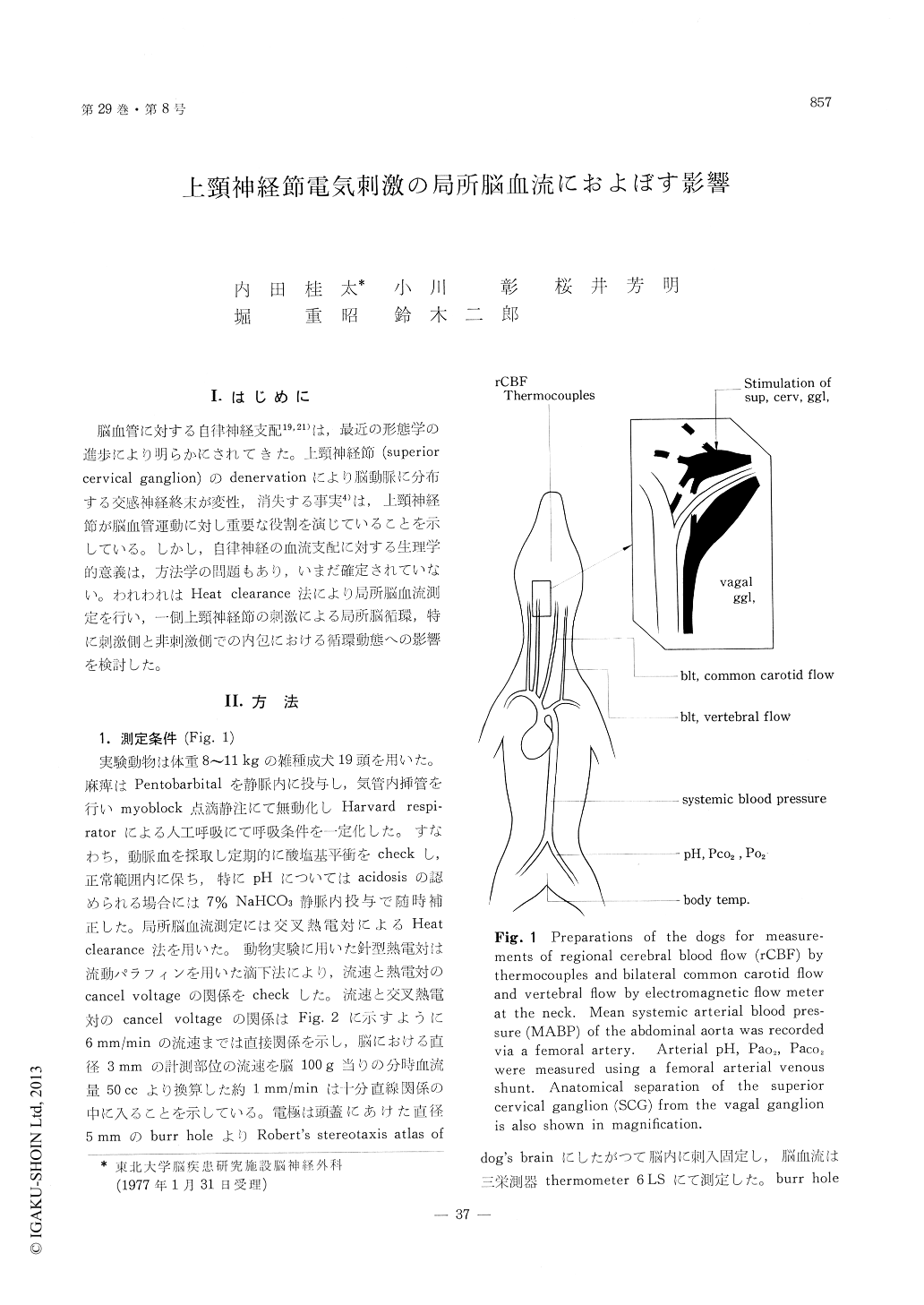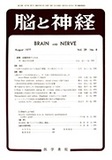Japanese
English
- 有料閲覧
- Abstract 文献概要
- 1ページ目 Look Inside
I.はじめに
脳血管に対する自律神経支配19,21)は,最近の形態学の進歩により明らかにされてきた。上頸神経節(superior cervical ganglion)のdenervationにより脳動脈に分布する交感神経終末が変性,消失する事実4)は,上頸神経節が脳血管運動に対し重要な役割を演じていることを示している。しかし,自律神経の血流支配に対する生理学的意義は,方法学の問題もあり,いまだ確定されていない。われわれはHeat clearance法により局所脳血流測定を行い,一側上頸神経節の刺激による局所脳循環,特に刺激側と非刺激側での内包における循環動態への影響を検討した。
The abundant autonomic nervous supply to cere-bral vessels has been clarified recently by mor-phological studies. Yet, the specific physiological effects of this nervous system on cerebral blood flow (CBF) are not well known. Our experiments were carried out in order to make clear the in-fluence of the superior cervical ganglion (SCG) in controlling CBF at the ipsilateral internal capsule. The SCG in dogs was completely separated from the vagal ganglion and stimulated electrically. Measurements of regional cerebral blood flow (rCBF)were continuously made by the heat clearance method using thermocouples. Furthermore, the bilateral carotid and vertebral flow were determined simultaneously at the neck by electromagnetic flow meter. When an initial drop of systemic arterial pressure was observed by stimulation of the SCG, we omitted such data from the experiments, because it was possible that the vagal nerve was stimulated concurrently by the SCG stimulation that also interfered with CBF changes. In nine of ten dogs, unilateral stimulation of the SCG markedly reduced the ipsilateral carotid flow and rCBF at the internal capsule which is fed by the internal carotid artery. On the other hand, rCBF at the contralateral internal capsule changed at random.
From the results obtained, it was enphasized that the superior cervical ganglion definitely plays an important role in controlling ipsilateral regional cerebral blood flow at the internal capsule and that complete separation of the SCG from vagal ganglion is essential to seize pure effects of the SCG on rCBF.

Copyright © 1977, Igaku-Shoin Ltd. All rights reserved.


